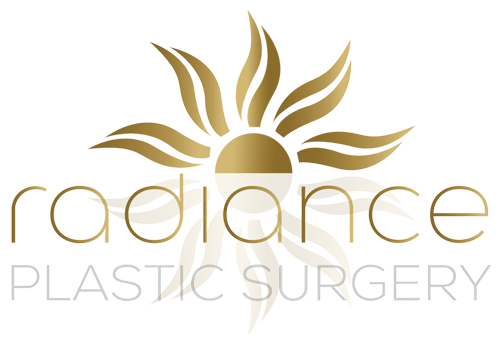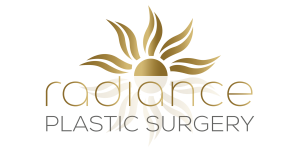Understanding the longevity of breast implants is crucial if you’re considering augmentation or reconstruction. While breast implants can significantly improve the appearance of your breasts, they are not lifetime devices. The lifespan of your implants can vary depending on the type, brand, and even individual factors related to your body and lifestyle. However, on average, implants last 10 to 20 years before replacement is necessary.
Saline and silicone are the two primary types of breast implants. Saline implants, filled with sterile salt water, provide a uniform shape and feel. In contrast, silicone implants are filled with silicone gel, which many patients feel more closely mimics natural breast tissue. Each material has its own set of benefits and considerations, and it’s not uncommon for both types to require eventual replacement due to factors such as implant rupture or cosmetic changes over time.
Monitoring your breast implants is essential for maintaining your health and achieving the best long-term aesthetic result. Regular checkups with your healthcare provider are necessary to assess the condition of your implants. If you experience any changes in the look or feel of your implants, or if it’s been a decade or more since your procedure, consulting a board-certified plastic surgeon can provide professional guidance tailored to your specific situation.
Understanding Breast Implants
When considering breast implants, it’s crucial to understand the types of implants available and the considerations that come with choosing the right size and shape for your body. You should also recognize the vital role of a qualified plastic surgeon in this process.
Types and Materials
Breast implants are commonly made from either saline or silicone gel. Saline implants are silicone shells filled with sterile salt water. They’re often filled after placement, allowing for a smaller incision. Silicone gel implants, on the other hand, consist of silicone shells filled with a viscous silicone gel that mimics the feel of natural breast tissue. Both types have specific benefits and considerations:
- Saline:
- Adjustable size: The fill level of saline implants can be adjusted during surgery.
- Smaller incision: Typically requires a smaller incision since they are filled after placement.
- Silicone:
- Natural feel: Generally considered to feel more like natural breast tissue.
- Pre-filled: These implants are pre-filled and may require a larger incision.
Choosing the Right Size and Shape
Selecting the appropriate size and shape for breast implants is a personalized decision that should align with your body frame and aesthetic goals. Here’s how to navigate this choice:
- Consider Proportion: Your implant size should complement your natural body structure for a balanced appearance.
- Shape Options: Implants come in various shapes, such as round or teardrop (anatomical). The right choice can influence the projection and the overall look of the augmentation.
The Role of the Plastic Surgeon
A reputable plastic surgeon is instrumental in guiding you through the decision-making process and performing the surgery with skill and precision. They will:
- Provide professional advice on type, size and shape suitable for your physique.
- Ensure a thorough understanding of the procedure, expected outcomes, and risks associated with breast augmentation.
By diligently assessing these factors with the help of your surgeon, you can achieve results that meet your expectations and complement your natural anatomy.
Procedure and Recovery
Your journey towards breast augmentation includes both the surgery itself and a dedicated recovery period. Understanding what to expect during the procedure and post-operative care can prepare you for a smoother recovery.
Breast Augmentation Surgery
During breast augmentation surgery, your surgeon will place implants to enhance breast size and shape. If you’re also experiencing sagging, a breast lift may be performed concurrently. Incisions can vary but are commonly made under the breastfold, around the areola, or under the arm. Creating a pocket in the breast tissue or beneath the chest muscle allows implant placement. You’ll likely have scar tissue around the implants, a normal part of the healing process.
Post-Operative Care
Immediately after surgery, you’ll experience pain and swelling, which can be managed with prescribed medications. Proper care is crucial to avoid complications; this includes taking antibiotics to prevent infection and wearing a surgical bra that supports your breasts and minimizes movement. Monitoring for signs of infection or other complications is essential to post-operative care.
Recovery Process
The recovery process post-surgery varies by individual but generally includes several stages:
- Initial Recovery: During the first few days, focus on rest and limited movement to facilitate healing.
- Follow-Up Appointments: These are vital for tracking your progress and addressing concerns.
- Gradual Resumption of Activities: Over several weeks, you can slowly begin to return to your daily routines, avoiding strenuous activities until cleared by your surgeon.
Monitor the breast size and shape as it stabilizes and the swelling subsides. If you’ve undergone breast reconstruction, the recovery may be more prolonged, and additional steps may be necessary. Adjust your activities and follow-up care as advised to ensure the best outcome for your breast augmentation or reconstruction.
Longevity and Maintenance
When considering breast implants, it’s essential to understand that they are not lifetime devices. The longevity of breast implants varies, and regular monitoring is necessary to maintain their condition and address any complications that may arise.
Implant Lifespan
The lifespan of your breast implants can vary, typically from 10 to 20 years. However, about 20% of individuals will have their implants removed or replaced within 8 to 10 years. Factors that can affect the durability include the implant type, your lifestyle, and changes in your breast tissue over time.
Monitoring and Checkups
Regular checkups are essential to ensuring the integrity and safety of your implants. Initially, the FDA recommends an MRI three years after installation and then every two years to screen for silent rupture in silicone implants however this is rarely done in practice. You should perform monthly self-checks and schedule annual checkups with your surgeon to monitor for changes.
Complications and Replacement
Complications such as capsular contracture, where scar tissue forms around the implant, or silicone rupture can necessitate implant removal or replacement. Safe implant replacement is straightforward but requires a consultation with your surgeon to discuss the best approach for your situation.
Safety and Regulations
When considering breast implants, it’s essential to be aware of the regulations and guidelines set forth by the FDA, the potential complications that may arise, and the latest research developments to ensure your safety.
FDA Guidelines
The FDA (Food and Drug Administration) has established a comprehensive set of guidelines for breast implants to ensure your safety. Surgeons performing these procedures, particularly board-certified plastic surgeons, must follow these regulations meticulously. If you’re contemplating breast implants, ensure that your surgeon is operating within the stringent FDA standards, which include the use of approved implants and adherence to safety protocols during and after surgery.
Identifying Complications
Complications such as silent rupture, which can occur with silicone and saline implants, require vigilant monitoring. Symptoms like burning, rippling, sagging, leakage, tingling, or breast hardening could indicate a problem with your implants. In rare cases, textured shells have been associated with BIA-ALCL, a type of cancer, thus underlining the importance of regular checkups.
Latest Research and Developments
Research is ongoing to enhance breast implant safety. Silicone implant rupture, detectable through an ultrasound or MRI scan, has been a focal point of recent studies. Innovations aim to improve the quality and longevity of implants and minimize the risk and cost associated with them. As a patient, staying informed about these advances can help you make educated decisions about your procedures and mammograms, and it can also provide insights into topics like breastfeeding post-implant.
Remember to consult with a board-certified plastic surgeon, such as Dr. Michael Laliberte, who can discuss the latest safety information and surgical advancements, guiding you through a process to ensure your well-being and satisfaction.
Frequently Asked Questions
Breast implants come with certain expectations regarding their durability and maintenance. The following frequently asked questions provide clear answers based on current practices and research.
What is the typical lifespan of saline breast implants?
Saline breast implants are generally expected to last between 10 and 20 years. However, you must know that individual experiences can vary, and some may need replacement earlier due to leakage or other complications.
At what age should one consider removing or replacing breast implants?
There’s no specific age for removal or replacement; it depends on your circumstances and the condition of the implants. You should have regular checkups and consult your surgeon if you notice any changes or concerns.
What are the costs associated with breast implant replacement?
The cost of breast implant replacement can vary widely. Factors that influence the cost include the surgeon’s fees, the type of implants used, the location of the surgery, and any additional procedures that may be required.
Is it possible for breast implants to last a lifetime without replacement?
It’s rare for breast implants to last a lifetime. Most patients will require breast implant replacement or removal at some stage due to various factors such as implant rupture, capsular contracture, or cosmetic concerns.
What is the expected recovery period following a breast augmentation procedure?
Most individuals take 4 weeks off from work to allow for recovery. If you do office work, you may be able to return as early as 2 weeks. Let your discomfort be your guide. You can resume normal activities by the end of 2 weeks. It will take 4 weeks to get back to significant aerobic or physical activity.

